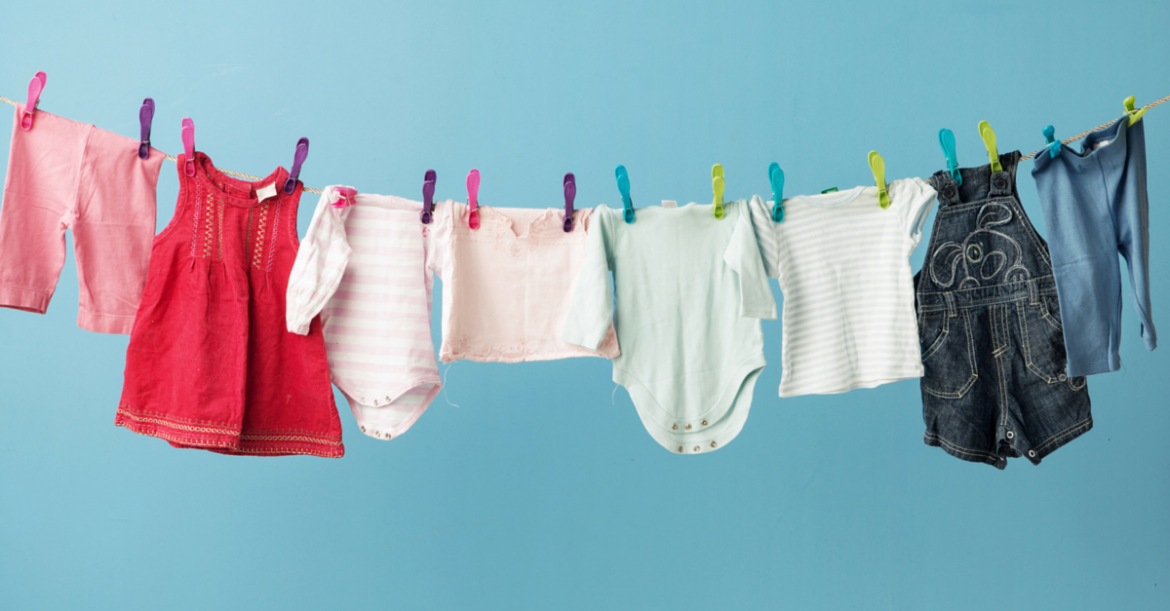Since having my first child almost four years ago, I always thought of eco-friendly clothing as being synonymous with organic clothing. While organic clothing is eco-friendly, there are other types of clothing that are also considered eco-friendly. A broader definition is: clothing that is either recycled, organic or a product that does not harm the environment and is biodegradable.
Recycled clothing is one of the best ways to get some great outfits without breaking the bank. While I’ve been quite fortunate to be the recipient of many hand-me-downs from friends and family, I realize not everyone is so lucky. There are a number of second-hand stores that offer a wide array of gently-used children’s clothing. One store that I really like is Once Upon a Child. They are the largest national reseller of children’s clothing with over 240 locations in the United States and Canada. These stores are a great way to keep clothing out of landfills and on children. Other similar retailers include: Children’s Orchard and Kid to Kid. Also, when your kids have outgrown their clothing, these retailers will buy them from you—another great way to help the environment.
When buying new clothing that is eco-friendly, there is a lot to choose from—much more than you might have found only five years ago. While it can be overwhelming to navigate the world of organic fibers, following are a few of the most common eco-friendly fabrics that you can look for when shopping for your children:
– Hemp—According to EarthEasy.com, in addition to being environmentally friendly, Hemp clothing is stronger than cotton, long-lasting and is lightweight. Since it is such a cool, lightweight fabric, it’s great for children to wear in the warmer months.
– Organic Cotton—Labeled organic based on the farming practices used to produce it, organic cotton is grown without the use of pesticides, chemical dyes or harmful metals.
– EcoSpun—This polyester fabric is used to make fleece. Soft to the touch, warm, lightweight and weather-resistant, it’s hard to believe EcoSpun is made from recycled plastic bottles.
As organic and eco-friendly clothing becomes more popular, it’s becoming less difficult to find. Major retailers including Macys, Walmart, Target, and Sears now sell eco-friendly clothes. Familiar children’s clothing brands like Gerber are now offering organic clothing lines, as well. Additionally, there are many new brands dedicated to eco-friendly children’s clothing, like Kate Quinn Organics, Ecobaby Organics and Under the Nile. You can find more brands by doing a Google search for children’s clothing. While most eco-friendly clothing is pricier than their less eco-friendly counterparts, there are places where you can get great discounts. Two sites gaining popularity are Zulily and Totsy. Both often (but not always) feature organic clothing brands at deep discounts for a set number of days. These are the sites where I first became familiar with Kate Quinn Organics and Under the Nile.
One more thing to consider when buying clothing is to avoid items that require dry cleaning. I personally avoid it for the pure hassle it creates, especially when you consider how filthy children can get their clothes! Beyond that, it’s better for you and the environment to minimize exposure to the chemicals used in dry cleaning, specifically one called perchloroethylene (perc). According to the Environmental Protection Agency’s website, “approximately 85% of cleaners use perc as their primary solvent.” While perc is cost-effective and can be reused, it is also toxic in higher levels to humans and the environment. Currently, researchers are looking for safer alternatives to perc.
Armed with this information, it’s time to go out and buy some new and new-to-you clothes for your kids. Hopefully you’ll be able to find some great outfits at great prices—but know that the positive impact you’re having on the planet for future generations is priceless.
 Food
Food Farmers
Farmers Sustainable Living
Sustainable Living Living Planet
Living Planet News
News